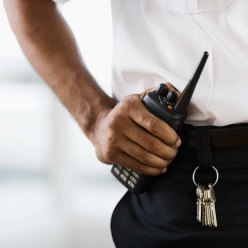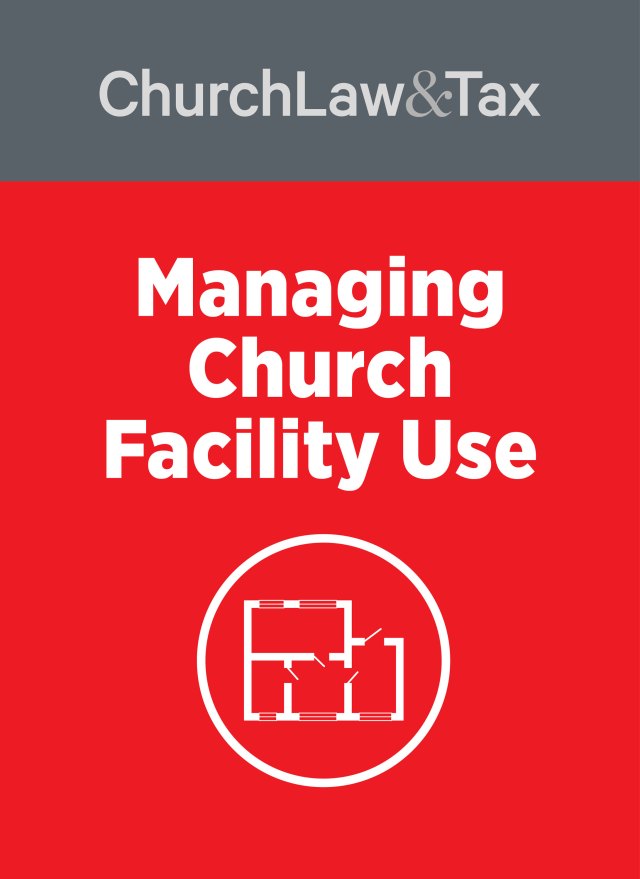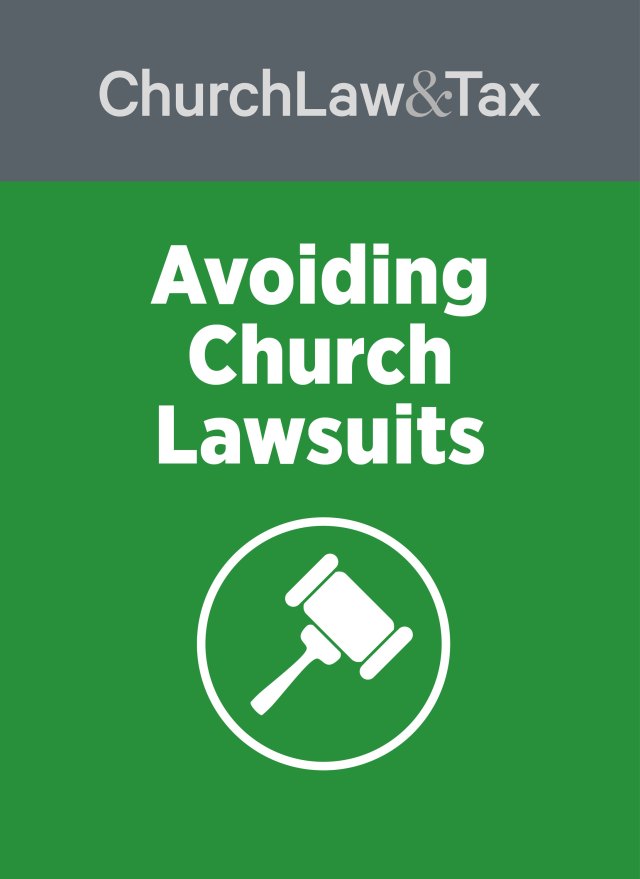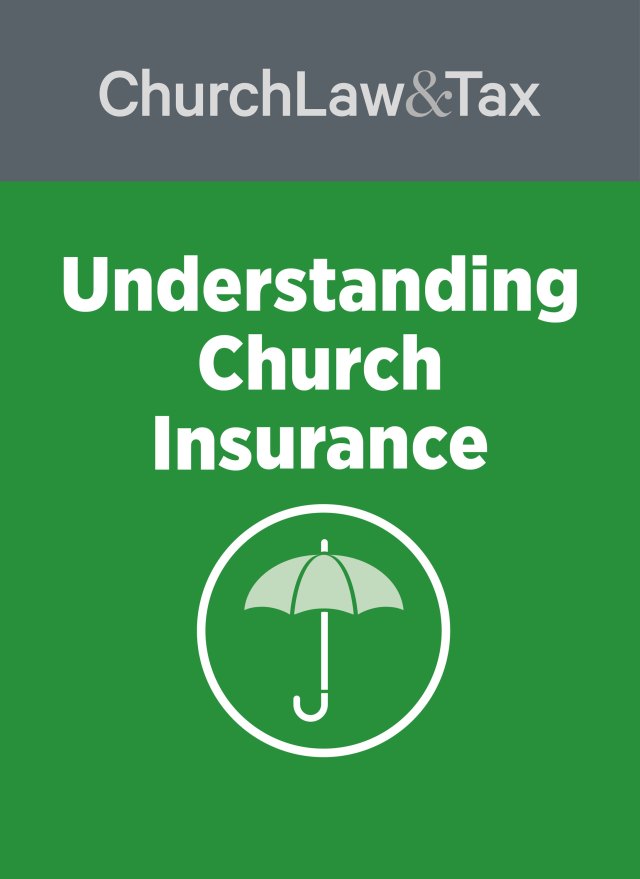Does a church have the legal authority to remove disruptive individuals from church services? This issue has been addressed by a number of courts. Generally, the courts have been sympathetic to attempts by churches to deny access to disruptive individuals.
To illustrate, a Connecticut court agreed that a church could bar a disruptive individual from entering onto church premises. It noted that “there was ample evidence that the defendant entered church property, on the three occasions charged, as a knowing trespasser. The record reveals that the defendant had been unequivocally informed and understood that his privilege to attend church services had been revoked …. The record here is replete with evidence that this defendant knew that he was trespassing upon church property and was unwelcome at services.” With regard to the defendant’s claim that a church is “public property” and that one cannot be convicted of trespassing for attending services, the court observed that “property does not lose its private character merely because the public is generally invited to use it for designated purposes …. The owner or one in lawful possession has the right to determine whom to invite, the scope of the invitation and the circumstances under which the invitation may be revoked.” As to the defendant’s claim that his constitutional rights were violated by his conviction for attending church services, the court observed that there is “no constitutional right to ‘freedom of movement’ or ‘freedom of worship’ on private property where there is no license or privilege to be there.” State v. Steinmann, 569 A.2d 557 (Conn. App. 1990).
• Key Point. Churches do not have to tolerate persons who disrupt religious services. Church leaders can ask a court to issue an order barring the disruptive person from the church’s premises. If the person violates the order, he or she may be removed from church premises by the police, and may be found to be in contempt of court.
• Example. A Texas appeals court ruled that a trespasser could be ordered off church property. A trespasser entered onto a church’s premises just prior to the conclusion of Sunday morning services. He carried a sign and attempted to speak with persons leaving the church services about “taxes” and “civil rights.” A security guard asked the trespasser to leave the premises, and when he refused, the police were called in. When the trespasser continued speaking with church members, two security guards physically restrained him and held him in a church building until the police arrived. The trespasser was convicted of criminal trespass and was sentenced to 90 days in jail. The court further ordered the trespasser “not to go onto or within 200 yards of the [church].” He appealed his conviction on the grounds that he had a constitutional right to be on the church’s property, and that the requirement that he not go within 200 yards of the church in the future was unreasonable.
A state appeals court rejected both of these arguments. In rejecting the trespasser’s claim that his criminal conviction for trespass violated his constitutional right of free speech, the court emphasized that the First Amendment guaranty of free speech “is not protected” on private property, and therefore had no application to a church. In concluding that the church’s property was private property, the court observed that (1) the trespasser ignored warnings to stay off the property, (2) the church had signs posted on its premises clearly stating that the premises were for church use only, and (3) church policy prohibited picketing or demonstrating on its property. Finally, the court concluded that the trial court’s order prohibiting the trespasser from coming within 200 yards of the church property was reasonable: “It significantly contributes to [his] rehabilitation by removing from him the temptation of trespassing on the church’s property. The condition also insures that those persons legally using the property will be protected from any unlawful interference.” Gibbons v. State, 775 S.W.2d 790 (Tex. App. 1989).
• Example. A California court ruled that a disruptive person who engaged in outbursts during church services and harassed members before and after worship services could be legally restrained from the church property. The court concluded that person’s right of free speech “does not trump the church’s right to prohibit her disruptive conduct on its property.” The court observed: “The more an owner, for his advantage, opens up his property for use by the public in general, the more do his rights become circumscribed by the statutory and constitutional rights of those who use it. But, in this case, the church is not an open forum. And if the expression [of speech] is inappropriate for the property or is incompatible with the intended use of the property, then the expression may be totally barred and the property is considered a non-forum …. Here, in the absence of a restraining order, the church and the congregation would continue to suffer from [this person’s] outbursts and disruptive behavior. This is not a dispute over free speech. The church has expelled a member who was harassing the congregation and disrupting religious services. With each passing day, the church risks losing more members. And the church should not have to conduct services or meetings in secret just to avoid the interference of an expelled congregant. Without a restraining order, the church and its members would suffer irreparable harm. If a restraining order is granted, the affect on [the expelled member] would be negligible. She would no longer be able to annoy the congregation, tear down church bulletins, or frighten children. She has said that she will continue her disruptive behavior until a court directs otherwise. That time has come.” Church of Christ v. Superior Court, 121 Cal.Rptr.2d 810 (Cal. App. 2002). Accord Church of Christ v. Lady Cage-Barile, 2004 WL 2943265 (unpublished decision, Cal. App. 2004); Christ Lutheran Church v. Stude, 2004 WL 2813584 (unpublished decision, Cal. App. 2004) (a California court ruled that a trial court’s order prohibiting an abusive 84-year-old church member from entering church property was reasonable and valid).
• Example. A Louisiana court ruled that a church has a legal right to use reasonable force in removing a potentially disruptive individual from its premises. A former pastor attended a business meeting of his former church, even though (1) he was no longer pastor, (2) he was not a member, (3) he had no legal right to be present, and (4) had been notifi ed not to attend. He was asked to leave the church, but refused to do so. In response, a few members took him by each arm and physically removed him from the church. The former pastor later sued the members who removed him claiming that they had committed battery. A state appeals court disagreed. The court defi ned a battery as “harmful or offensive contact to another without that person’s consent, done with an intent” to cause the contact. The court concluded that the church members did not intend any offensive or harmful contact with the former pastor when they removed him from the building. It added: “They had a legal right to see that [he] left the church meeting so its business would not be impeded and disrupted by his presence. Their contact with him was a reasonable means of accomplishing that intention. When, with no intent to cause offensive or harmful contact, reasonable force is used by persons in authority against one who has provoked an incident, the resulting contact is not a battery.” Robinson v. Dunn, 683 So.2d 894 (La. App. 1996).
• Example. A Minnesota court upheld the legal validity of a restraining order prohibiting a disruptive individual from entering onto a church’s premises. A person (the “defendant”) disrupted services at a Catholic church. The church’s board of directors adopted a resolution authorizing the pastor to send a letter to the defendant banning him from church property, and to enforce the ban through appropriate legal action. This letter was hand-delivered to the defendant. Later, on three separate occasions, the defendant attended services at the church despite being banned from the premises. The church board asked a court to issue a “harassment restraining order.” Following a hearing, a court issued a restraining order that provided, “[The defendant] shall not enter upon the premises of the [church] and/or any other church property.” The defendant challenged the legality of this order on appeal. A state appeals court ruled that the order was valid and enforceable. The court noted that the First Amendment prohibits civil courts from deciding ecclesiastical or doctrinal disputes, but that “civil courts can hear non doctrinal disputes that can be determined utilizing neutral principles of law.” The court concluded that the church board’s resolution banning the defendant from the property was a “secular” document that provided the court “with a familiar and neutral basis to decide the harassment action before it.” The court also rejected the defendant’s claim that the restraining order was too broad. Naumann v. Zimmer, 1997 WL 10520 (unpublished decision, Minn. App. 1997).
• Example. A New York court upheld the convictions of religious protestors who disrupted a church service. As a Catholic church was preparing to conduct a mass in honor of gay pride, a group of protestors began disrupting the service. One protestor grabbed a microphone and shouted at a priest, “You shouldn’t be here. You are not fi t to be a priest. You should be ashamed of yourself. You’re not worthy to sell shoes.” Other protestors engaged in similar behavior. The protestors were charged with violating a state law that provides: “A person is guilty of aggravated disorderly conduct, who makes unreasonable noise or disturbance while at a lawfully assembled religious service or within one hundred feet thereof, with intent to cause annoyance or alarm or recklessly creating a risk thereof.” The protestors claimed that a mass is “a sacrifice of God to God on behalf of mankind,” and that a mass in honor of gay pride “would be in the name of sin and evil, therefore making the mass a sacrilege.” They argued that “all Catholics are under an obligation to prevent such a sacrilege from occurring within a church.” A court ruled that the protestors could be charged with violating the state law prohibiting disturbance of religious services, and that the law was not unconstitutional. The court concluded that the state may lawfully “protect the rights of those individuals who choose to exercise their fundamental right of freedom of religion.” It further observed that “the constitutional guarantees of the free exercise of religious opinion and of the people peaceably to assemble and petition for a redress of grievances, would be worth little if outsiders could disrupt and prevent such a meeting in disregard of the customs and rules applicable to it.” People v. Morrisey. 614 N.Y.S.2d 686 (N.Y. City Crim. Ct. 1994).
© Church Law & Tax Report is published six times a year by Christianity Today International, 465 Gundersen Dr. Carol Stream, IL 60188. (800)222-1840. © 2008 Christianity Today International. editor@churchlawandtax.com All rights reserved. This publication is designed to provide accurate and authoritative information in regard to the subject matter covered. It is sold with the understanding that the publisher is not engaged in rendering legal, accounting, or other professional service. If legal advice or other expert assistance is required, the services of a competent professional person should be sought. “From a Declaration of Principles jointly adopted by a Committee of the American Bar Association and a Committee of Publishers and Associations.” Annual subscription: $69. Subscription correspondence: Church Law & Tax Report, PO Box 37012, Boone, IA 50037-0012.




